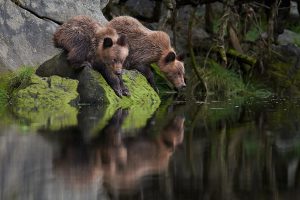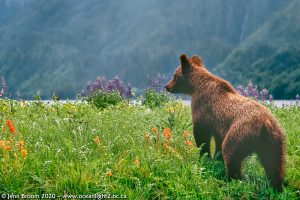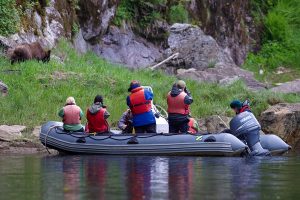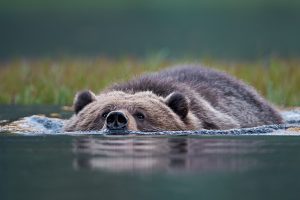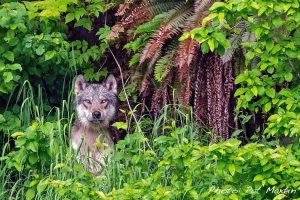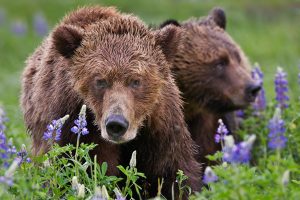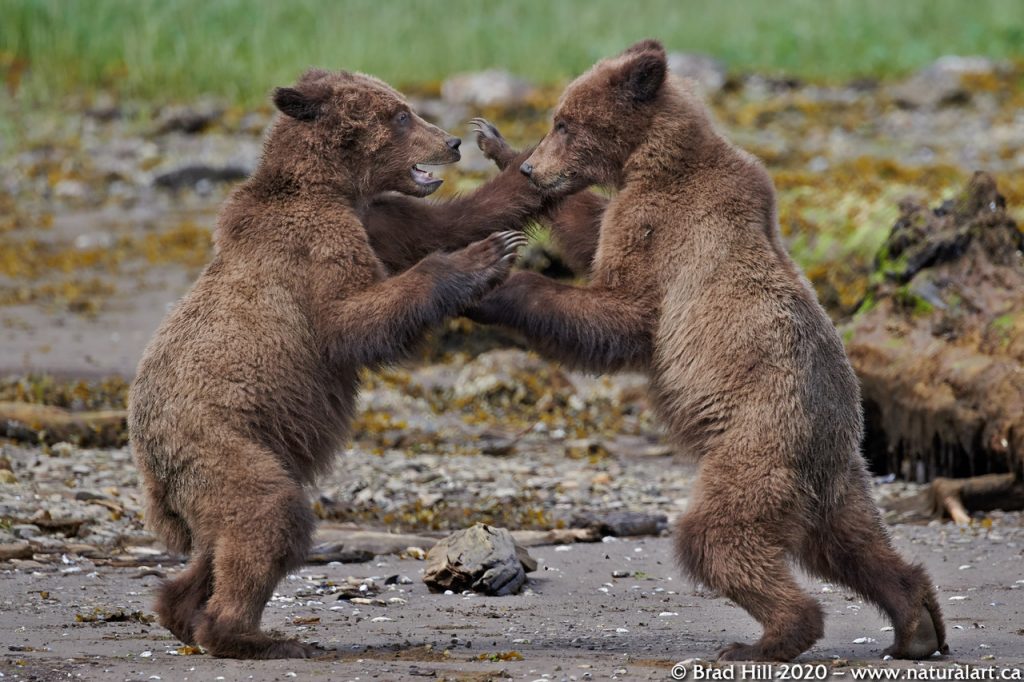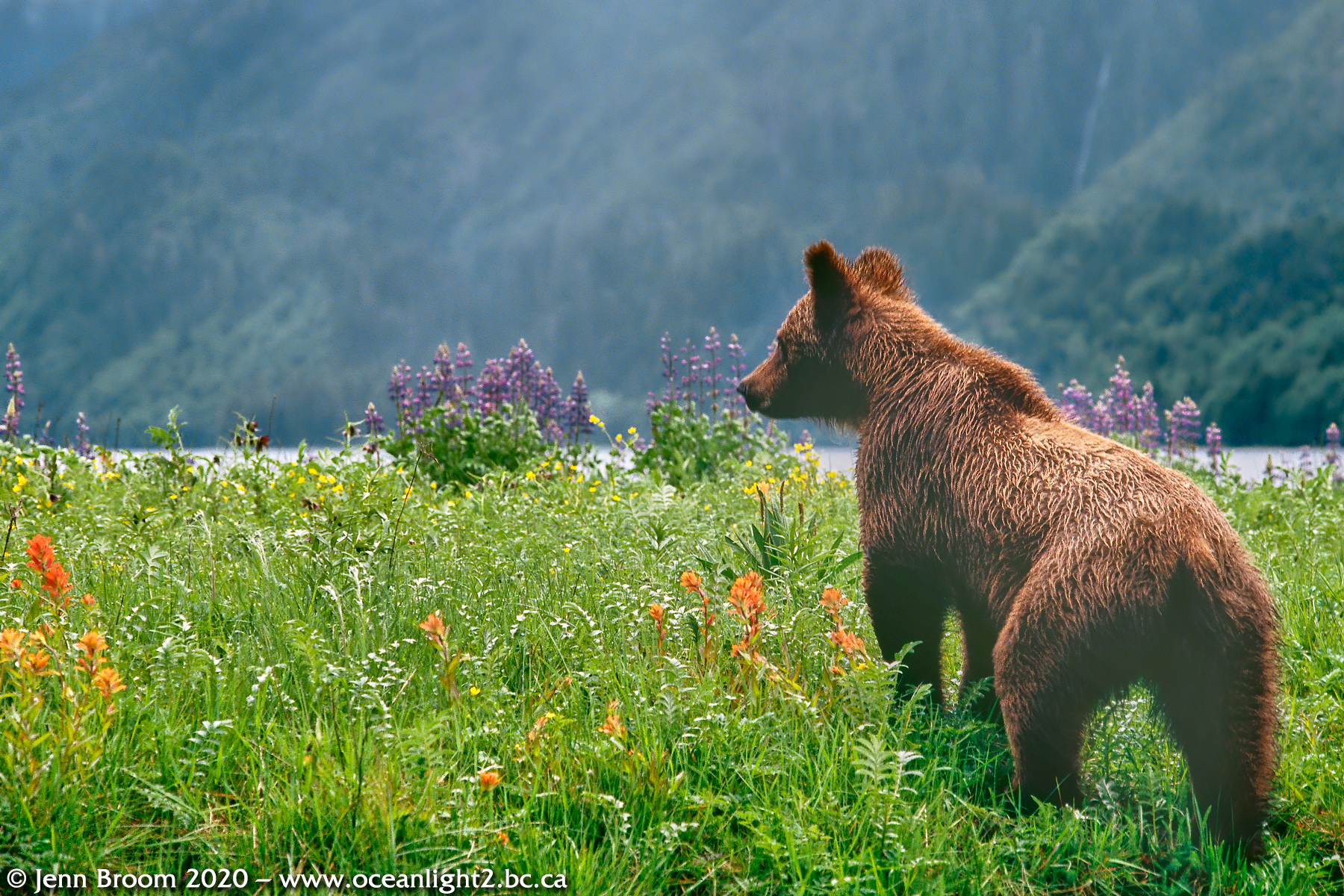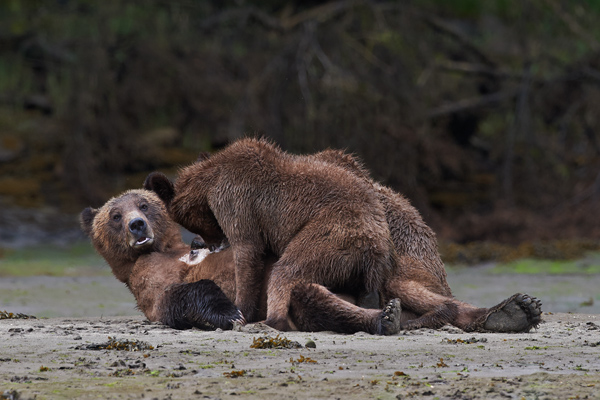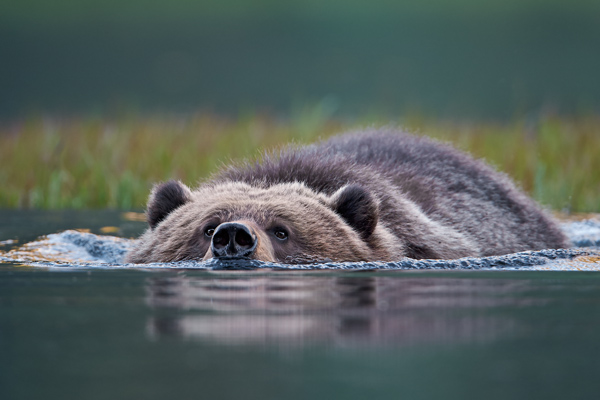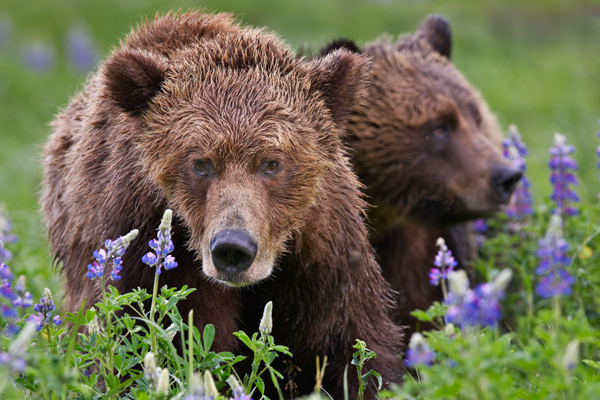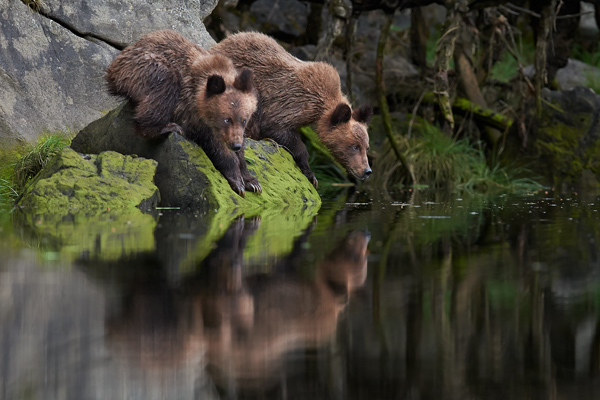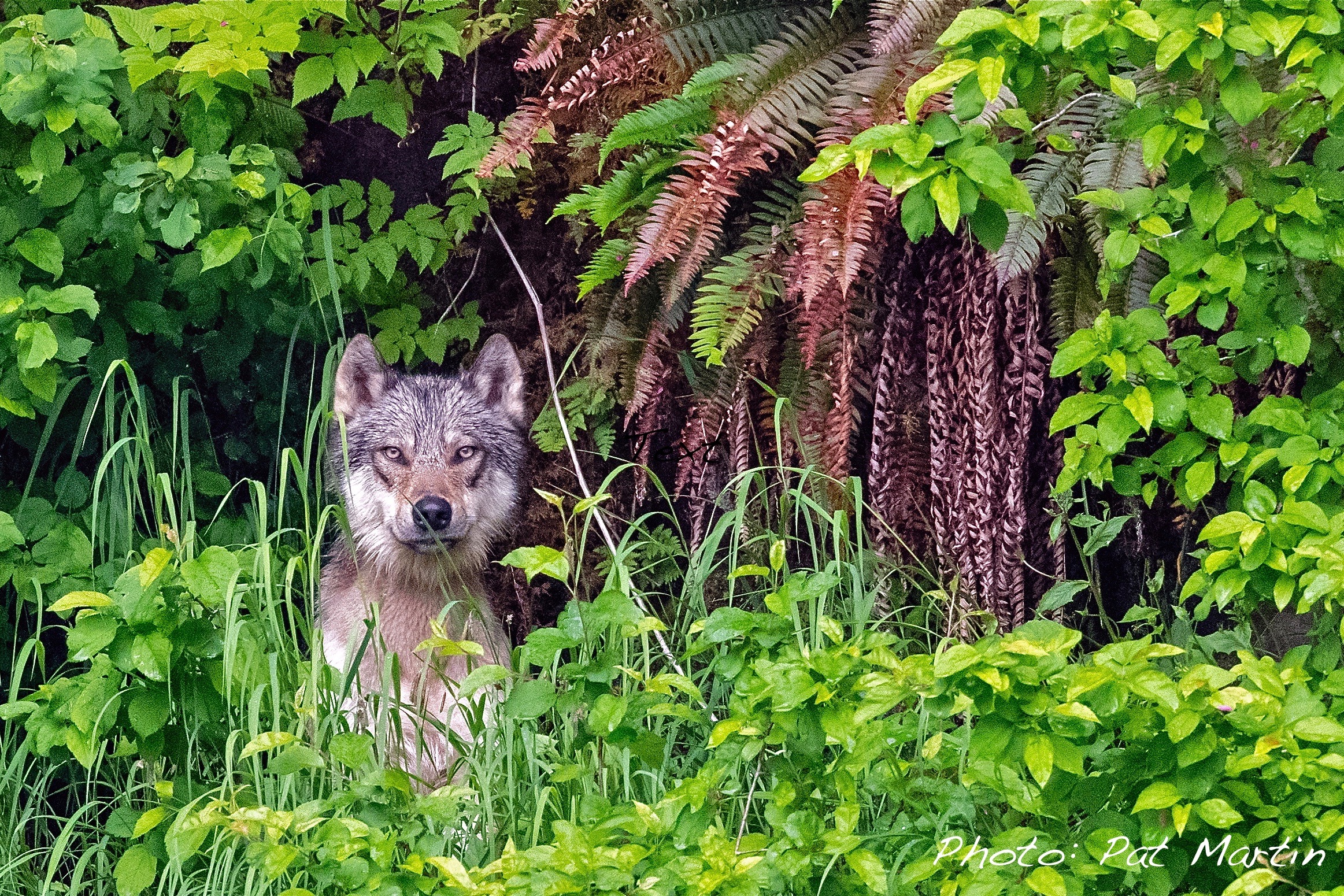Grizzlies of the Khutzeymateen
The lush, green Khutzeymateen Valley is a globally-unique wilderness treasure. Located on the northern BC coast, Canada’s only grizzly bear sanctuary lies within the planet’s last remaining intact coastal temperate rainforest. This spectacular fiord and stunning river estuary is the perfect habitat for grizzly bears. Visitors are privileged to observe and photograph grizzlies as they move through their daily lives and interact with one another. Only two outfitters are licensed to take small groups into this wilderness area which is home to at least 60 grizzlies. Be one of less than 200 people annually who are gifted with the intense and intimate experience of sharing in the rich and diverse lives of the grizzlies of the Khutzeymateen.
The Khutzeymateen is Canada’s only Grizzly Bear Sanctuary
With 34 years experience, Ocean Light Adventures is by far the longest running operator in the Valley
2025 Schedule: Grizzlies of the Khutzeymateen
- May 11-17*
- May 17-21*
- May 21-24
- May 24-29*
- May 29-June 2*
*privately booked
- June 2-6*
- June 6-10*
- June 10-13
- June 13-16*
- June 16-19
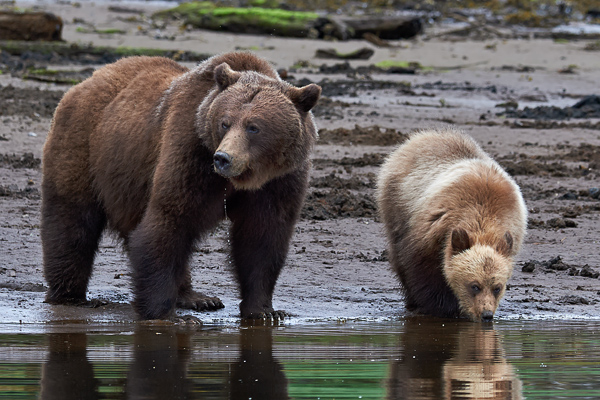
IMPORTANT NOTE: The Grizzlies of the Khutzeymateen trip is extremely popular and books up very early. While many of our Khutzeymateen trips are almost fully booked, our bookings can remain quite fluid up until a short time before departure. So we strongly encourage you to contact us if you’d like to travel into the Khutzeymateen this year. There’s still a very good chance we can accommodate you. We look forward to hearing from you!
May 11 – 17* • May 17 – 21* • May 21 – 24
May 24 – 29* • May 29 – June 2* • June 2 – 6*
June 6 – 10* • June 10 – 13 • June 13 – 16*
June 16 – 19*
*privately booked
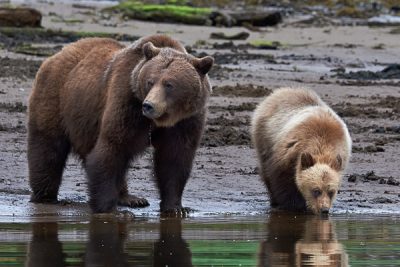
IMPORTANT NOTE: The Grizzlies of the Khutzeymateen trip is extremely popular and books up very early. While many of our Khutzeymateen trips are almost fully booked, our bookings can remain quite fluid up until a short time before departure. So we strongly encourage you to contact us if you’d like to travel into the Khutzeymateen this year. There’s still a very good chance we can accommodate you. We look forward to hearing from you!
Looking Ahead: Grizzlies of the Khutzeymateen 2026
- May 11 – 17
- May 17 – 21
- May 21 – 24
- May 24 – 29
- May 29 – June 2
- June 2 – 5
- June 5 – 8
- June 8 – 11
- June 11 – 14
- June 14 – 18
- June 18 – 21
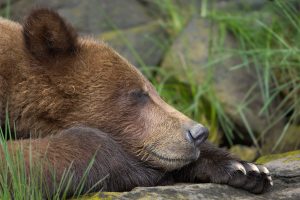
- 3 days, 3 nights
- 2026 price: TBD
- 2026 Brochure available: Autumn 2026
May 11 – 17 • May 17 – 21 • May 21 – 24
May 24 – 29 • May 29 – June 2 • June 2 – 5
June 5 – 8 • June 8 – 11 • June 11 – 14
June 14 – 18 • June 18 – 21
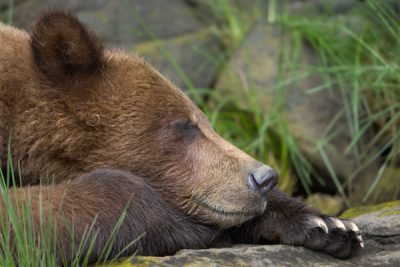
3 days, 3 nights • 2026 price TBD
2026 Brochure available: Autumn 2026
Background Information: The Khutzeymateen Grizzly Sanctuary
The Khutzeymateen Valley is Canada’s only grizzly bear sanctuary and the home of one of British Columbia’s most important coastal populations of grizzly bears. Located on the northwest coast of BC, the Khutzeymateen is a stunning land of dense Sitka spruce rainforest, fjords and high, rugged mountains. The Khutzeymateen lies at the northern end of the The Great Bear Rainforest which is one of the largest contiguous tracts of temperate rainforest in the world.The Khutzeymateen River watershed plus the neighbouring drainages of Larch and Cedar Creek, make up the 44,000 hectares of the sanctuary.
At one time, grizzlies were widespread and found throughout much of North America. Due to human population growth, extensive development, and direct persecution, grizzlies have been extirpated across much of their historic range. Even in the remote coastal regions of BC viable grizzly bear habitat has been reduced to small, isolated pockets. Here on the coast clear-cutting has devastated much of the grizzly’s habitat and has also caused erosion along streams, thereby destroying one of the primary food sources for grizzlies – the salmon spawning grounds.
In the early 1970s the threat of logging to the Khutzeymateen was first identified. Two small areas were cut in 1950 and 1956, but the rest of the Khutzeymateen was left untouched. Intense lobbying by environmentalists in the 1980’s ultimately led to the creation of the sanctuary in 1992. Ocean Light Adventures under the leadership of Tom Ellison joined forces with the Valhalla Society in 1987 and offered the boat as a floating base camp for the many environmentalists and media people who came to help save the valley. Guided by the mentoring of bear biologist Wayne McCrory, and later Charlie Russell, we learned much about the grizzly bears. And, we became intimately connected to – and acquainted with – the many bears of the Khutzeymateen. Ocean Light Adventures has spent every spring since 1987 in the lush, green Khutzeymateen and is currently one of only two commercial operators allowed to take visitors into the estuary.
“Khutzeymateen” is a native word meaning “…a confined space of salmon and bears” and is an apt description for this area! The river mouth estuary provides important spawning grounds for pink, coho, chum and chinook salmon upon which the grizzlies depend.
The Khutzeymateen Valley contains three main ecosystem types: mountain hemlock, coastal western hemlock and alpine tundra. Each of these ecosystems has its own assemblage of flora and fauna and areas where ecosystems meet (which are often referred to as ecotones) are typically very high in biodiversity.
It is thought that a minimum of 60 grizzlies call the pristine wilderness of the Khutzeymateen home, which is perhaps the largest known concentration of grizzly bears on the entire BC coast. The grizzlies share the watershed with black bears, wolves, wolverines, mountain goats, mink, otters, martens, porcupines and beavers. Marine mammals such as seals, otters, and whales frequent the area and over 100 species of birds are also found in the valley.
Currently the Khutzeymateen is co-managed by BC Parks and the First Nations. Visitation is strictly regulated with only two commercial operators allowed into the sanctuary. Other operators are allowed to view grizzlies further out in the Khutzeymateen Inlet. There is a floating Ranger Station at the Sanctuary Boundary and two First Nation Rangers reside there and ensure that the human/bear interactions in the sanctuary and inlet fall within official guidelines. The original mandate of the park was to protect the valley for the grizzly bears and for more than 20 years BC Parks has been doing a stellar job. To this day the Khutzeymateen remains a place where wild grizzlies can be viewed intimately while they share all aspects of their daily lives with a small number of very privileged human visitors.
The Grizzly Bear
Grizzly (or brown) bears are North America’s largest terrestrial carnivore. Size and weight vary considerably with region, but the largest bears are typically found in coastal areas. The grizzly bear gets its name from the light tipped guard hairs which give them a grizzled appearance. In the spring grizzlies emerge from their winter dens very hungry – during this season the grizzlies of the Khutzeymateen focus on eating sedge grass, skunk cabbage and roots near the shoreline of the inlet. They can also be seen foraging in the intertidal zone for clams and shore crabs. Coastal grizzly bears are powerful swimmers and in their estuary home are in and out of the water almost constantly. They can often be seen snorkelling with just their heads below the water.
Grizzly bears are solitary animals for most of the year. However, in spring it is mating season and adult bears congregate. Female grizzlies stay with their cubs for up to three years, so often in the Khutzeymateen in the spring we will see female bears with cubs.
On the coast grizzly bears enter their dens to hibernate in late October/early November, and cubs are born in the dens in the deep of winter. Typically the bears emerge from the dens in early spring. Female grizzlies on the coast have between 1 and 3 cubs.
Grizzly bears have a great sense of smell and phenomenal hearing. Contrary to folklore, grizzlies can also see very well and their vision is comparable to humans. They use their powerful senses to locate food and to detect danger.
We find that the best time period for viewing grizzlies in the Khutzeymateen is from mid-May through to mid-June. During this time the bears are normally present in relatively large numbers and exhibit (and share with us) an amazingly wide array of behaviours, including courting and mating behaviour, dominance struggles between young males and their older counterparts, mother-cub interactions, and more. At this time of year the sedges and grasses are still reasonably short and don’t obscure the bears, making for both ideal bear viewing and bear photography conditions. As an added bonus, the hours of daylight at this northerly latitude during this May-June time period are very extended, thus giving us many hours to view the bears each day.
Travelling to the beautiful Khutzeymateen Valley and sharing a few days with the grizzlies of the Khutzeymateen is a unique and unforgettable experience that you will cherish forever.
FAQ about our Khutzeymateen trip
All of our tours offer excellent photographic opportunities. Our photography tours are very similar to our standard tours but to accommodate the additional gear of photographers – and to maximize shooting angles from our inflatable boat – they are limited to fewer participants (normally 6 clients plus the photography guide).
Yes we request that you stay within the suggested weight limits. We choose to use float planes to transport our guests to and/or from the boat but the planes have weight restrictions. Our fresh food is also brought in on the float planes. The Afterglow I, while being spacious, is still a boat and storage space for extra gear is always limited. Please follow the list of suggested clothing and equipment carefully and remember your stay on board is just 3 or 7 days. If your gear exceeds the weight limit it may get left behind or you may be charged for an extra float plane!
Yes, there are drying lockers on the aft deck where we hang all the wet gear each night to dry. In order to keep the inside of the boat dry and comfortable we do not bring wet gear into the main living area or cabins. Cotton clothing is not recommended as it takes a long time to dry.
No, there are not opportunities for kayaking on all our trips. Our Gwaii Haanas trips offer the best kayaking experiences as there are many different bays and coastlines waiting to be explored by kayak. Our North Coast Explorer trips also offer sheltered kayaking while the Afterglow I is at anchor.
Yes. In Gwaii Haanas and North Coast Explorer we will try fishing for halibut, lingcod, and salmon as well as crabs, when possible. On our Khutzeymateen and Great Bear Rainforest trips we will try fishing for Dungeness crabs and, if opportunities present themselves, for salmon and halibut. If you want to participate in fishing you must purchase a saltwater fishing license before you arrive at the boat.
Hiking boots are not necessary on any of our trips – they are heavy and add to your overall weight. Every time you leave the Afterglow I and get into the zodiac to go ashore you will wear your rubber boots. For most people on the short distances we walk, rubber boots work well. When you are on the Afterglow I you need comfortable shoes with a non-marking sole to wear both inside and outside.
Yes, we HIGHLY recommend that you take trip medical insurance, trip cancellation insurance and trip evacuation insurance. Ask your insurance agent or your travel agent for options available to you. Your current policies may have a travel clause that covers you. Read the fine print to see what your coverage is in BC as a resident or non-resident. Thoroughly review the Ocean Light Adventures cancellation and refund policy on the website before you book your trip.
Yes, we can accommodate many dietary restrictions as long as we know about it in advance. We strive to serve healthy organic food, seafood fresh from the ocean (whenever possible), homemade soups, breads, salads and baked goods. We can take care of most of your food allergies, intolerances, likes or dislikes. If your needs are great, the cook will do their best to accommodate but be warned that the cook is just one person and serves a group meal that can be adapted slightly to meet the needs of individuals. The cook can not make 8 individual meals. If your dietary needs are many, this may not be the trip for you. Please contact us in advance of booking to discuss.
Please do not bring a tripod on our Khutzeymateen trips, there will be no opportunity to use it as all shooting is done from the inflatable and it is too heavy to bring on the float plane. On all other trips, you can bring a tripod and it may be useful in certain situations. Note that on many of our trips we follow the bears’ daily activities and therefore move about quite a lot- a beanbag can be useful when shooting from the zodiac. On the Great Bear Rainforest trips, we utilize bear viewing stands on the edge of the river and tripods will be useful. On the North Coast Explorer trip it is good to have a tripod to set up on the deck of the Afterglow I to photograph the various marine mammals.
Yes, the boat has a number of regular household outlets for charging batteries. Other electrical appliances such as hair dryers can be used but may need the generator so check with the crew before using.
Yes, you can bring a laptop. The boat has an inverter with 120V AC power at all times. Remember we have strict weight limits on the float planes so choose your gear wisely.
Our absolute maximum group size is 9, however we prefer to run trips with 6-8. This small group size is favourable because it creates a more intimate setting and makes it easier to move as a group.
Bear viewing on the coast is often dictated by the tides. We will spend as much time as possible viewing the bears. We will move from one bear viewing situation to another throughout the day and the majority of each day will be spent with the bears.
Within the Khutzeymateen Sanctuary bear viewing guidelines have been set up. We must follow the guidelines and approach the bears to within safe distances. We will get ample opportunities to view and photograph the bears from a favourable distance. On our Great Bear Rainforest trip, we will explore grizzly habitat in the inflatable and are governed by BC Parks and First Nations guidelines. For our spirit bear viewing we observe the bears from a stand set up on the edge of the river.
No, we do not charge a single supplement. However you will most likely have to share a cabin (two separate bunks) with another guest of the same gender, or you may be lucky and get a cabin to yourself, it all depends on the make-up of the other guests.
Ocean Light Adventures has been in operation on the BC Coast for over 30 years and our experience and expertise in the areas that we visit is unsurpassed. We keep our groups small and intimate so that we can move about in our wilderness settings more efficiently and safely. Our boat, the Afterglow I is a beautiful, spacious and comfortable yacht and it is expertly maintained and fully equipped. We have passionate, experienced, professional crew who will make sure your trip is an amazing one.


